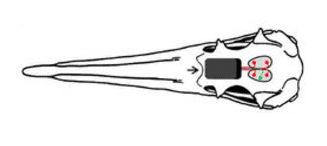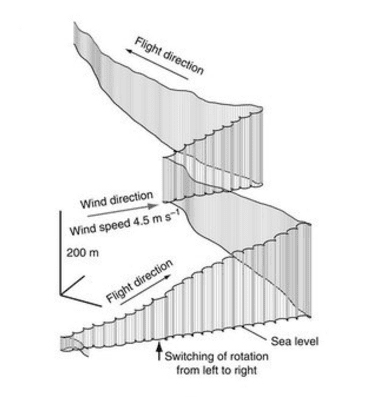An experiment performed by an international team of scientists has confirmed that birds are capable of sleep while flying. The finding finally allows researchers to explain how some species of birds can pull off their incredibly long flights without falling out of the skies, exhausted.

Modified after Niels C. Rattenborg et al., 2016 / Nature Comm.
It’s Thursday morning, and you begrudgingly get out of bed to go to work. You’re tired and you only want to go back to sleep, and flossing (or not flossing) doesn’t help either — truth is, you’re getting too much work and not enough sleep!
Well, too bad we’re not birds. They can pull off some incredible feats seemingly without a moment of shuteye, pulling in horrendously long flight hours with ease. This has lead scientists to theorize that certain bird species are capable of sleeping mid-flight, but have never been able to confirm this theory.
A recent experiment by an international team of researchers has now proven this to be true, showing that birds rest while hitching a ride on rising air currents.
Niels Rattenborg from the Max Planck Institute and colleagues from several other institutions have found that migratory birds can shut down one half of their brains for rest and can even fly with both hemispheres shut down at the same time. Even more impressively, they retain their navigational ability during REM sleep, a state so deep it involves temporary loss of muscle tone.
Putting only one hemisphere to rest while the other keeps watch is known as unihemispheric sleep, and it allows animals to get some rest while maintaining awareness of their surroundings. Dolphins sleep like this, so they can still surface for air and prevent drowning (which tends to ruin a good night’s sleep,) but up to now it’s only been assumed in birds — it has been previously observed on ducks perching on land, but never in flight. Unihemispheric sleep during flight made sense, but there wasn’t any evidence to support it.
With help from researchers at the University of Zurich and the Swiss Federal Institute of Technology, Rattenborg’s team developed a small device that gets strapped to a bird’s head, which records electroencephalographic (EEG) brain activity and head movements. Using this device, they recorded the brain activity of flying frigatebirds to check for signs of two different types of sleep: slow wave sleep (SWS) and rapid eye movement (REM).

Modified after Niels C. Rattenborg et al., 2016 / Nature Comm.
They chose this species because frigatebirds spent weeks on end flying over the ocean in search for dinner. The birds strapped with Rattenborg’s device flew more than of 1,850 miles (3,000 kilometers) without stopping for a break. When the flight data recorders were recovered and analyzed, the data showed that the birds remained awake during the day, but as the sun set they stopped foraging and went into soaring mode and went into SWS windows of up to several minutes.
SWS either kicked in in one hemisphere at a time or in both simultaneously. This lead the team to conclude that the birds don’t need unihemispheric sleep to remain in flight — however, it occurred quite often, mostly while the birds were circling, rising on air currents.

Interestingly, and quite unexpectedly, the SWS sometimes occurred in one hemisphere at a time, or in both hemispheres simultaneously. The researchers concluded that birds don’t need unihemispheric sleep for aerodynamic control.
That said, unihemispheric sleep occurred quite often, and it happened while the birds were circling, rising up on air currents. This suggests that the birds were literally keeping one eye open, watching where they were going, likely hoping to avoid a collision with other birds.
The birds occasionally fell into REM sleep, too. This might sound like a pretty dangerous thing to do while flying, but birds don’t handle REM sleep the same way that we do. Just like us, they do lose muscle tone — the heads of the birds dipped during the REM phase — but in birds, this pattern happens in bursts of a few seconds, so their flight patterns ultimately aren’t affected.
Even so, they get an average of only 42 minutes of sleep per day so…I’m sorry, frigatebirds? They do make up for it on land, where they get a solid 12 hours of sleep every day — and they get better quality sleep too. But that still means that, for most of their foraging runs, they’re seriously sleep deprived. How they’re able so function with so little rest for so long remains a mystery.
The full paper, “Evidence that birds sleep in mid-flight,” has been published online in the journal Nature Communications.


